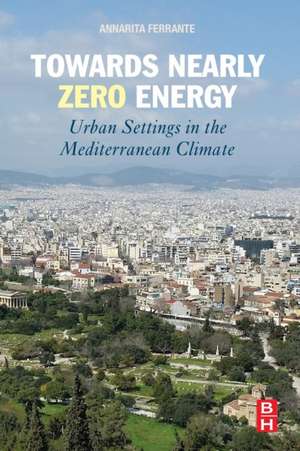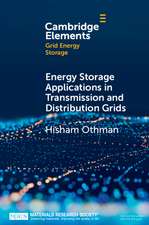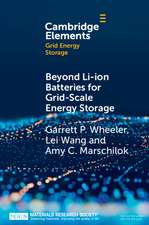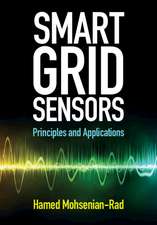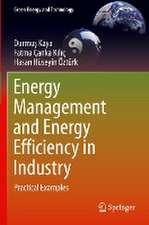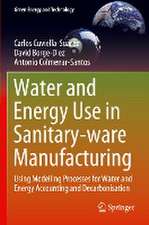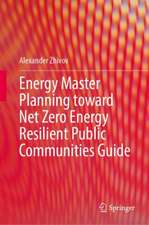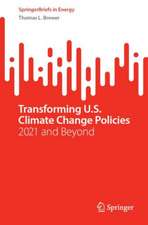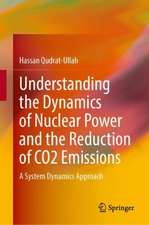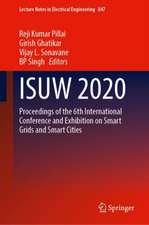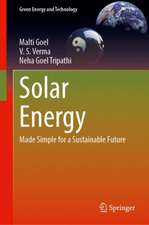Towards Nearly Zero Energy: Urban Settings in the Mediterranean Climate
Autor Annarita Ferranteen Limba Engleză Paperback – 17 feb 2016
The book looks at the life of the systems of energy production from renewable sources amidst the exceptionally challenging global economic crisis that the Mediterranean areas and other societies are currently experiencing. By using an innovative and interdisciplinary approach of socio-oriented technological design, the book indicates tools and measures that can be developed at the public, legislative, and market levels to counterbalance the large pay-back times of energy efficiency measures.
In particular, the book displays guidelines and best practices to activate new forms of economic incentives in order to attract potential investors that demonstrate that a large set of possible solutions is technically feasible to achieve nearly zero energy, even in high energy consuming circumstances and urban settings.
Furthermore, by discussing and comparing the economic and energy impact of different technology options, this work offers guidelines and best practices to activate new cost-effective forms and social incentives in order to attract both potential investors and motivate the urban stakeholders toward nearly zero energy.
- Strategies and zero energy solutions for practitioners
- Policy s and economic resolutions to combat legislative barriers
- Examples and case studies of nearly zero energy urban environments
Preț: 607.72 lei
Preț vechi: 667.82 lei
-9% Nou
Puncte Express: 912
Preț estimativ în valută:
116.30€ • 126.29$ • 97.69£
116.30€ • 126.29$ • 97.69£
Carte tipărită la comandă
Livrare economică 15-29 aprilie
Preluare comenzi: 021 569.72.76
Specificații
ISBN-13: 9780081007358
ISBN-10: 0081007353
Pagini: 292
Dimensiuni: 152 x 229 x 15 mm
Greutate: 0.48 kg
Editura: ELSEVIER SCIENCE
ISBN-10: 0081007353
Pagini: 292
Dimensiuni: 152 x 229 x 15 mm
Greutate: 0.48 kg
Editura: ELSEVIER SCIENCE
Public țintă
Researchers, engineers and scientists working with renewable energy, energy storage and/or grid transmission; power engineers, systems planners and operators, energy storage engineers & designersCuprins
1. (INTRODUCTION)
1.a) Urban Environments and energy related issues
1.b) Heat Island in the mediterranean cities. The case study of the Athens Metropolitan Area (AMA)
1.c) Policy background and zero energy case studies at urban and building scales
2. nearly Zero Energy Urban Settings (ZEUS)
2. a) Urban discretized model: homogenous urban areas and urban units of the city
2. b) Case studies’ selection and potential reiterative units at the district city scale
2. c) Three representative Urban environments in the AMA
2. c1) The Energy Demand in the selected urban environments
2. c2) The Energy Saving potential of retrofitting options at the building’s scale
2. c3) The Energy generation and balance by renewable energy sources at the building’s scale
2.c4) The energy saving potential of green and passive techniques in the selected urban environments
2. d) On the technical feasibility of nearly ZEUS
3) OVERCOMING EXISTING CONSTRAINTS TOWARD ZEUS
3. a) Is the technical feasibility associated to the economic feasibility in the ZEUS? Important Economical barriers for ZEUS
3. b) Why do we believe in the economic feasibility of nzebs in existing urban environments? Energy and Non- Energy related issues in the energy retrofitting as Possible incentives towards ZEUS
3. c) To what extent is deep renovation towards nZEBs competitive with respect to shallow or standard retrofit? Cost-benefit analysis of deep renovation and volumetric additions in energy retrofitting actions towards ZEUS
3. d) Expandable Architecture, Add-Ons and Tailored solutions to increase the techno-economical Feasibility of ZEUS
3. e) Legislative barriers and designed solutions
4. CONCLUSIONS: Tool Kits for Practitioners and Policy Recommendations
5. REFERENCES
1.a) Urban Environments and energy related issues
1.b) Heat Island in the mediterranean cities. The case study of the Athens Metropolitan Area (AMA)
1.c) Policy background and zero energy case studies at urban and building scales
2. nearly Zero Energy Urban Settings (ZEUS)
2. a) Urban discretized model: homogenous urban areas and urban units of the city
2. b) Case studies’ selection and potential reiterative units at the district city scale
2. c) Three representative Urban environments in the AMA
2. c1) The Energy Demand in the selected urban environments
2. c2) The Energy Saving potential of retrofitting options at the building’s scale
2. c3) The Energy generation and balance by renewable energy sources at the building’s scale
2.c4) The energy saving potential of green and passive techniques in the selected urban environments
2. d) On the technical feasibility of nearly ZEUS
3) OVERCOMING EXISTING CONSTRAINTS TOWARD ZEUS
3. a) Is the technical feasibility associated to the economic feasibility in the ZEUS? Important Economical barriers for ZEUS
3. b) Why do we believe in the economic feasibility of nzebs in existing urban environments? Energy and Non- Energy related issues in the energy retrofitting as Possible incentives towards ZEUS
3. c) To what extent is deep renovation towards nZEBs competitive with respect to shallow or standard retrofit? Cost-benefit analysis of deep renovation and volumetric additions in energy retrofitting actions towards ZEUS
3. d) Expandable Architecture, Add-Ons and Tailored solutions to increase the techno-economical Feasibility of ZEUS
3. e) Legislative barriers and designed solutions
4. CONCLUSIONS: Tool Kits for Practitioners and Policy Recommendations
5. REFERENCES
